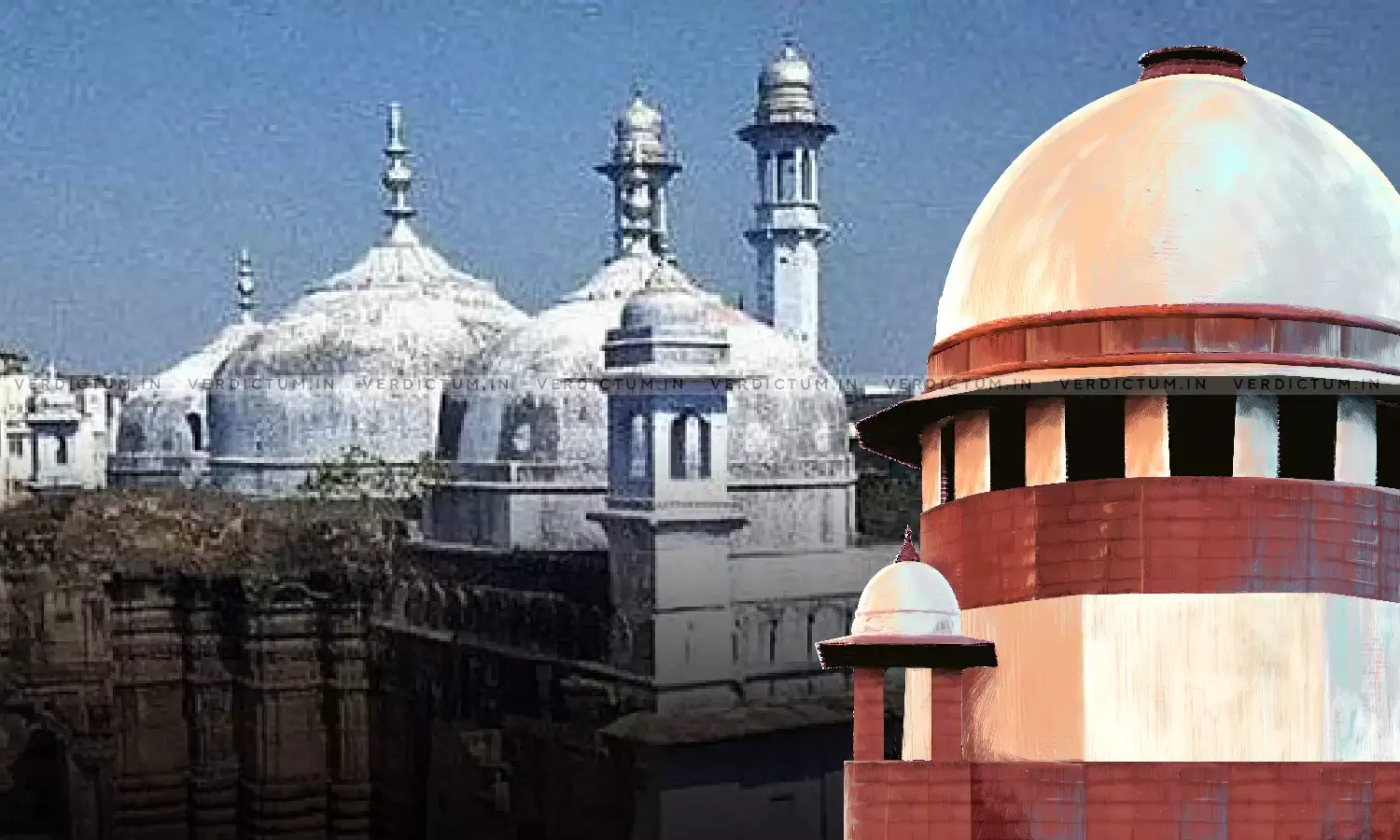Gyanvapi Dispute- Property Uninterruptedly Continues Character Of Hindu Place Of Worship: Read Response Of Respondents Before SC
The Plaintiffs in the Gyanvapi Mosque suit i.e. the Respondents in the appeal before the Supreme Court have filed an application for permission to bring on record additional facts and documents before the Supreme Court. The Petition produces with it, 29 documents among it, orders and pleadings before the Varanasi Court in an earlier suit.
The Petition quotes from the Vedas and Puranas about the importance of the Aadi Visheshwar Lingam at Kashi.
The Petition says that on 18.04.1669, Aurangzeb had issued 'farmaan' for demolishing the temple of Lord Shiva i.e. Adi Visheshwar at Benaras. "In fact the original temple was partly demolished and utilizing the remaining structure and the materials a construction was raised and named alleged 'Gyan Vapi Mosque' whereas the deities continued in visible and invisible form within the premises of old temple. A large portion of the building and a portion of Tahkhana remained in the control of Hindus", as per the Petition.
The Petition says that there is nothing on record to establish that the then ruler or any subsequent ruler has passed any order to create a Waqf over the land in question or for handing over the land to any Muslim or body of Muslims.
As per the Petition, the building in question contains the image of Swayambhu deity Goddess Shringar Gauri and images of a number of God and Goddess, a number of objects of worship and Hindu religious facets within the structure from the time immemorial. "The religious character of the building complex as Hindu place of worship is continuing till date despite the construction illegally raised by Muslims", says the Petition.
"The worshippers of Lord Shiva and Hindus in general are continuously worshipping the Lord Adi Visheshwar, Goddess Shringar Gauri and other deities existing within the property in question. Circumambulation around the deity is integral part of worship recognized by Hindu law. The devotees in thousands circumambulate through Parikaram Marg and perform other rituals and on festive days they assemble in lakhs to perform pooja thereat", as per the Petition.
The Petition refers to Civil Suit No.62 of 1936 filed by Deen Mohd before Sub Judge, Varanasi and states that the suit was filed even without impleading any person from the Hindu community. Therefore, the judgment passed in the suit is not binding upon any member of the Hindu community as per the Respondents who say that the evidence in that case, however, can be relied upon by the Hindus.
The Petition says that there are idols and objects of worship within the property in question and the temple has not lost its religious character at any point in time. It adds that Waqf can be created only on the land dedicated by a waqif who is the owner of the land. "It is apparent that entire land vested in the deity Lord Adi Visheshwar and He is the owner of the property in question which was usurped by Aurangzeb in the capacity of a ruler. The property did not belong to him. In any case there is no evidence that the property was dedicated to the almighty", the Respondents argue.
The Petition also says that the Waqf Board has no power or jurisdiction to register any part of the property in question as Waqf property and such registration cannot change the nature of the property from Hindu Temple into a Mosque and notification if any, issued by Waqf board registering the property in question as Waqf property is ultra vires, null and void.
As per the Respondents, the evidence recorded in Civil Suit no.62 of 1936 reflects that the entire area of 5 Kos (Krosh) was having a religious character of Sanatan Dharma. It is therefore contended that the property in question has uninterruptedly continued the character of a Hindu place of worship and that Section 4 of the Places of Worship Act can be applied in favour of temple and devotees.
Click here to read/download the Petition




